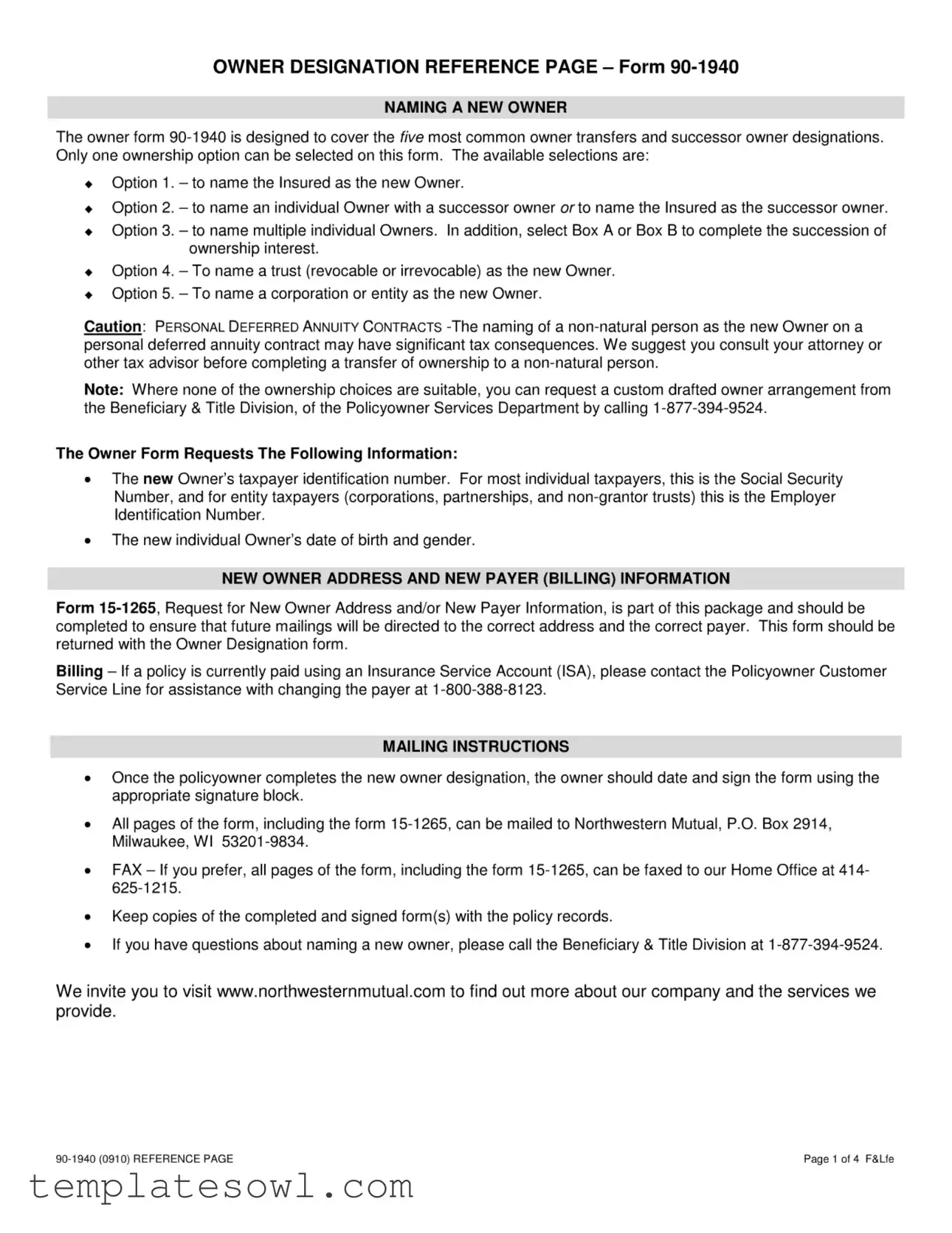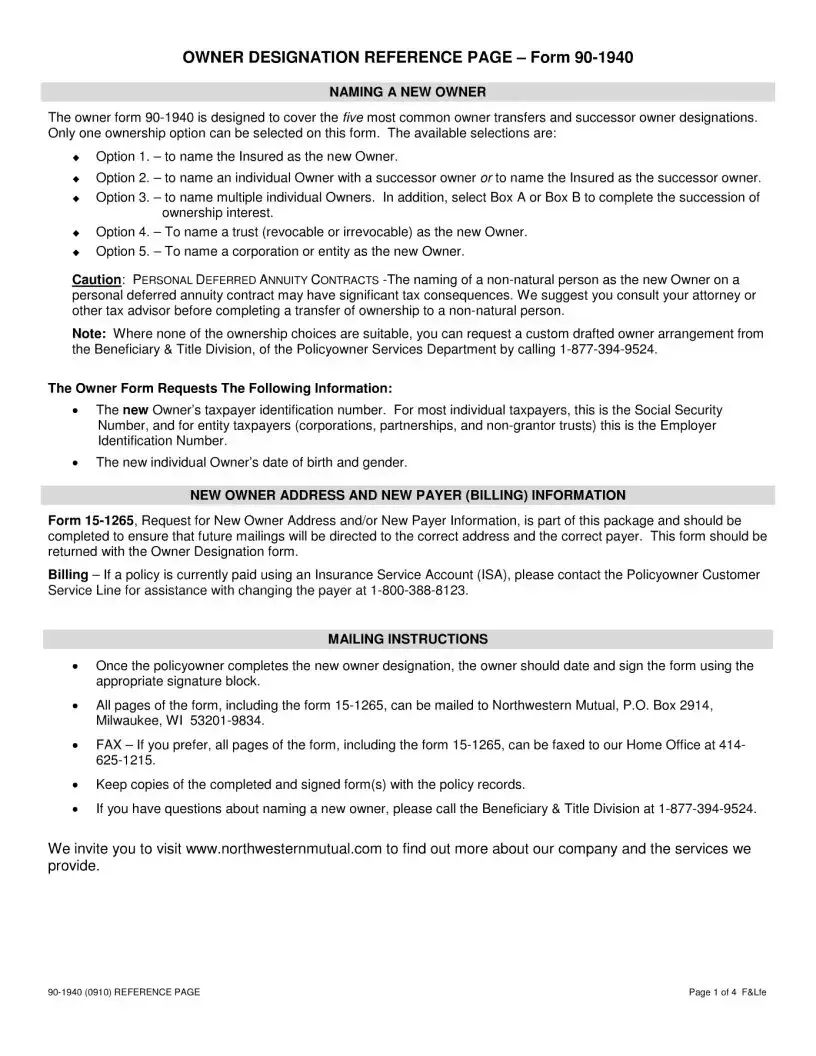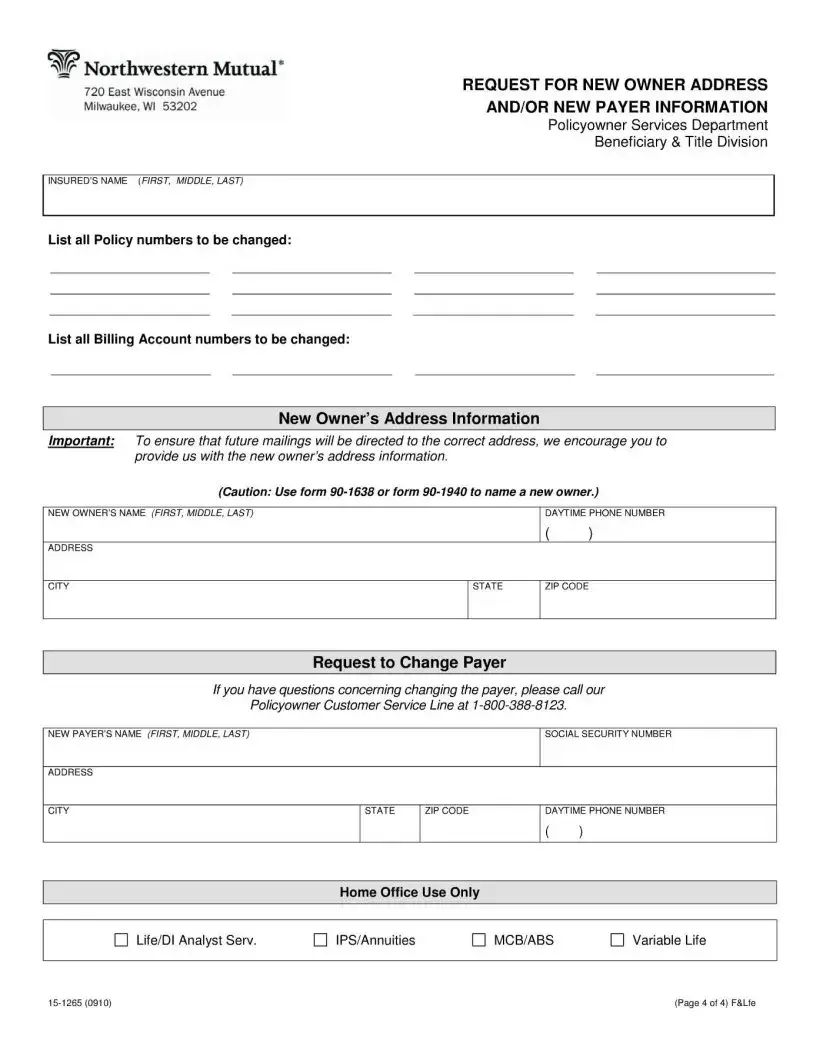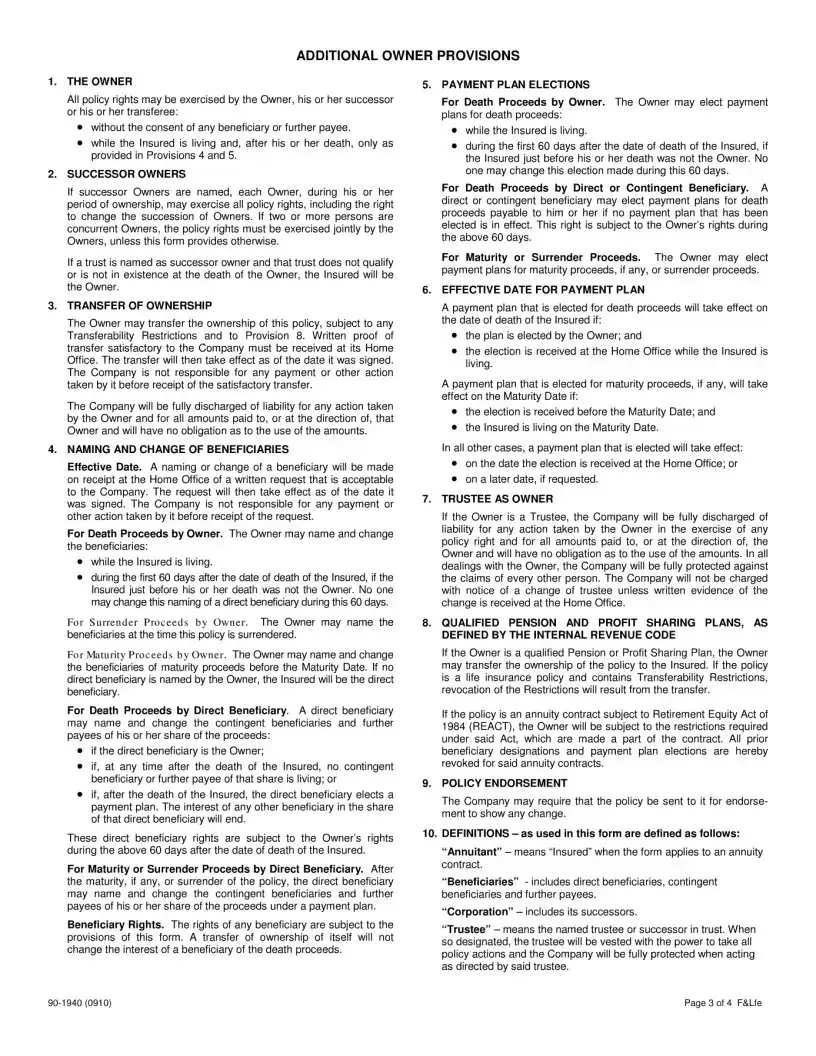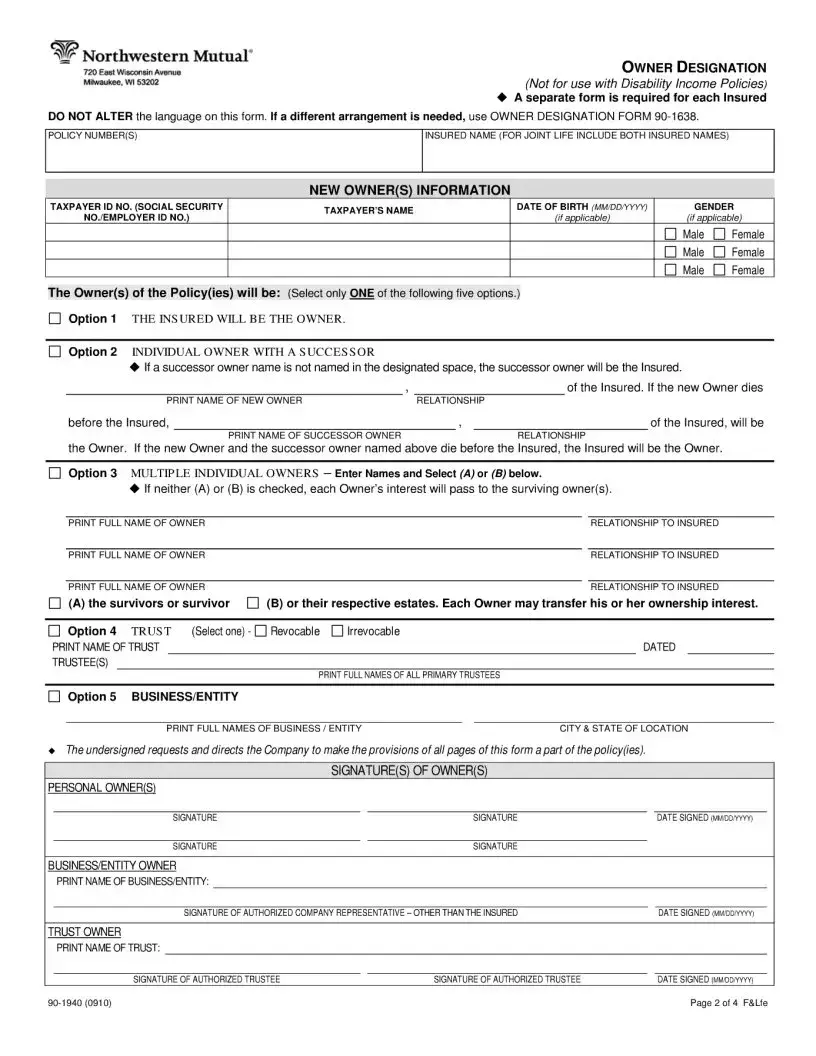What is the purpose of Form 90-1940?
Form 90-1940 is used to designate a new owner for a policy, covering different types of ownership transfers and succession ownership arrangements. Only one ownership option can be selected on this form, making it straightforward for policyholders to specify their preference. The form outlines various options, including naming the insured as the new owner, appointing individual owners, establishing trusts, or selecting corporations as owners.
What information is required when filling out Form 90-1940?
When completing Form 90-1940, you'll need to provide the new owner’s taxpayer identification number and, for individual owners, their date of birth and gender. This data ensures that the new owner's identity is verified and correctly documented. Additionally, you must select one of the available ownership options and provide details regarding the relationship between the new owner and the insured.
How should I submit Form 90-1940 once it is completed?
Once you have filled out and signed Form 90-1940, you have a couple of options for submission. You can mail it along with Form 15-1265 to Northwestern Mutual at their designated P.O. Box. Alternatively, you can fax both forms to their Home Office. Regardless of the method you choose, be sure to keep copies of all completed documents for your records.
Can I request a custom owner arrangement if none of the options fit my needs?
If the standard options on Form 90-1940 do not meet your requirements, you can request a custom owner arrangement. To do this, simply contact the Beneficiary & Title Division of the Policyowner Services Department at the provided phone number. They can help draft a suitable arrangement that aligns with your specific situation.
Are there any tax implications when naming a non-natural person as the new owner?
Yes, naming a non-natural person, such as a corporation or trust, as the new owner of a personal deferred annuity contract can have significant tax consequences. It’s essential to consult with an attorney or tax advisor before making such changes. This step will help ensure you fully understand any potential tax implications that may arise from transferring ownership to a non-natural entity.
